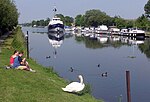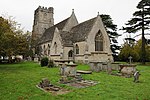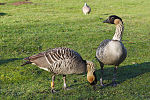Slimbridge A.F.C.
1902 establishments in EnglandAssociation football clubs established in 1902Football clubs in EnglandFootball clubs in GloucestershireGloucestershire County Football League ... and 7 more
Gloucestershire Northern Senior LeagueHellenic Football LeagueSouthern Football League clubsStroud DistrictStroud and District Football LeagueUse British English from March 2014Western Football League
Slimbridge Association Football Club is an English football club representing the village of Slimbridge, near Dursley, Gloucestershire (although its ground is in nearby Cambridge). The first team currently plays in the Southern League, the reserve team in the Hellenic League Division Two West, and the Under-18 Youth team in the Cheltenham Under-18 Floodlit Youth League. The club is affiliated to the Gloucestershire County FA.
Excerpt from the Wikipedia article Slimbridge A.F.C. (License: CC BY-SA 3.0, Authors).Slimbridge A.F.C.
Wisloe Road,
Geographical coordinates (GPS) Address Nearby Places Show on map
Geographical coordinates (GPS)
| Latitude | Longitude |
|---|---|
| N 51.723755555556 ° | E -2.3693416666667 ° |
Address
Wisloe Road
GL2 7AF , Slimbridge
England, United Kingdom
Open on Google Maps











